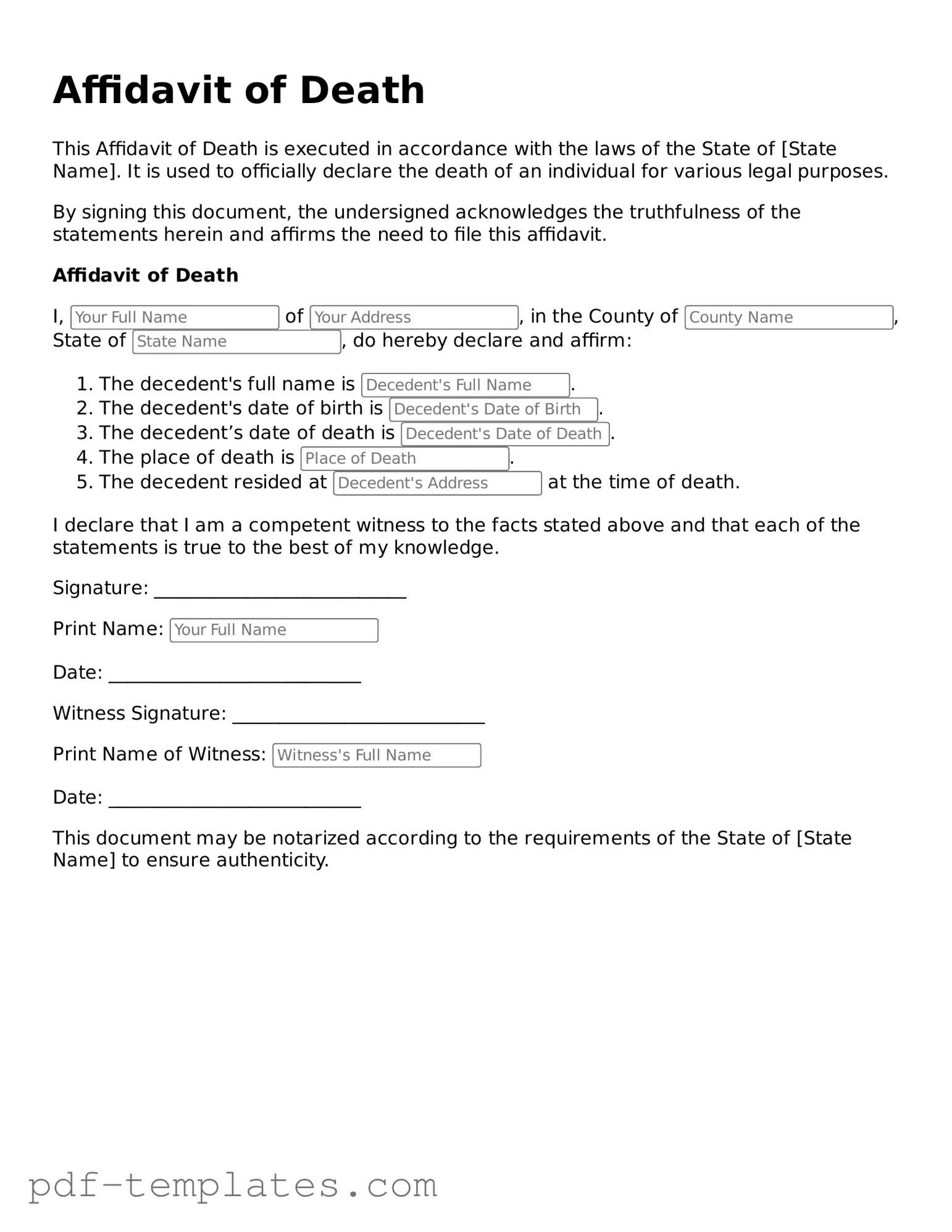The Affidavit of Death form shares similarities with a Death Certificate. A Death Certificate is an official document issued by a government authority that confirms an individual's death. Both documents serve to provide legal proof of death. While the Death Certificate is typically required for various legal processes, such as settling an estate, the Affidavit of Death may be used in specific situations, like transferring property ownership. Both documents are essential in handling the affairs of the deceased.
The California Loan Agreement form serves as a legally binding document between a borrower and a lender, outlining the terms and conditions of a loan in the state of California. This form covers the specifics of the loan, including the amount, interest rate, repayment schedule, and any security or collateral. It plays a crucial role in protecting the interests of both parties involved in a financial transaction. For further details and related documentation, you can refer to All California Forms.
Another document akin to the Affidavit of Death is the Will. A Will outlines how a person's assets should be distributed after their death. While the Affidavit of Death confirms the fact of death, the Will provides instructions for what happens next. Both documents play crucial roles in estate planning and management. They work together to ensure that the deceased's wishes are honored and that legal matters are settled efficiently.
The Affidavit of Death is also similar to a probate petition. A probate petition is filed with the court to initiate the legal process of administering a deceased person's estate. Like the Affidavit of Death, it requires proof of death. The probate petition provides a framework for distributing assets and settling debts, while the Affidavit serves as a statement affirming the individual’s passing. Both documents are vital in the legal process following a death.
Another related document is the Certificate of Inheritance. This certificate is issued by a court or authority to confirm the heirs of a deceased person. Similar to the Affidavit of Death, it serves to establish legal rights regarding inheritance. Both documents help clarify the status of the deceased's estate and ensure that the rightful heirs are recognized. They work together to facilitate the transfer of assets to beneficiaries.
The Affidavit of Death also resembles a Letter of Administration. This letter is granted by a court to an individual who will manage the estate of a deceased person when there is no Will. Both documents confirm the death and are used in the context of estate management. While the Affidavit provides evidence of death, the Letter of Administration authorizes someone to act on behalf of the deceased's estate, ensuring that their affairs are handled properly.
Lastly, the Affidavit of Death is similar to a Claim for Death Benefits form. This form is used to claim benefits from insurance policies or retirement accounts after a person's death. Both documents require proof of death to initiate claims or transfers. The Affidavit of Death serves as a formal declaration of the individual's passing, while the Claim for Death Benefits form is a practical application of that information to secure financial entitlements for beneficiaries.
